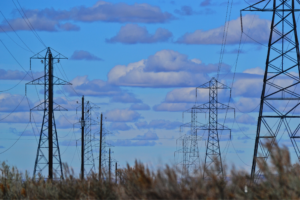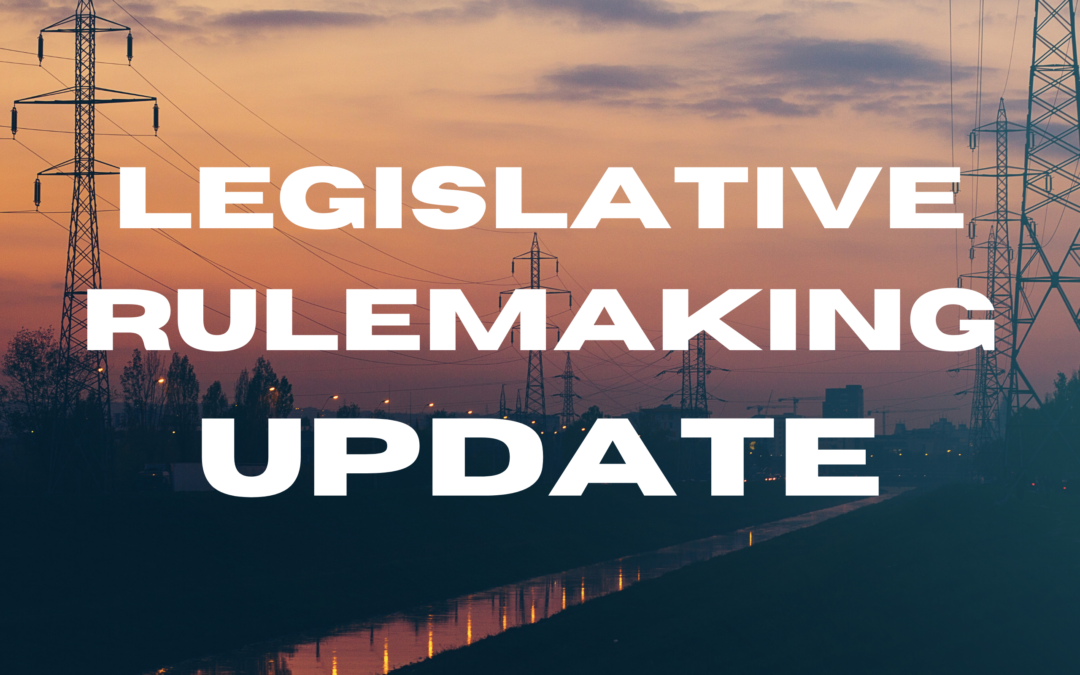SB 6 seeks to simultaneously facilitate these large load interconnections and insulate Texas ratepayers from related transmission costs and reliability concerns.
________________________________________________
Last spring, the 89th Texas Legislature enacted Senate Bill 6 to facilitate data center interconnections in the Electric Reliability Council of Texas region and manage related costs. On July 21, the PUC hosted an implementation workshop to address issues raised in the bill.
Below we summarize key provisions of SB 6 as well as stakeholder positions expressed during that workshop.
 SB 6 OVERVIEW
SB 6 OVERVIEW
According to ERCOT, Texas’ electricity demand — or “load”— will balloon from 86,667 megawatts in 2025 to 133,055 MW by 2030. This nearly doubling in demand results largely from the expected development of new large loads such as data centers and cryptocurrency operations. It also will require significant transmission and generation investments for support. SB 6 seeks to simultaneously facilitate these large load interconnections and insulate Texas ratepayers from related transmission costs and reliability concerns.
On a high level, SB 6 addresses these concerns through four directives.
First, SB 6 directs the PUC to establish uniform interconnection standards such as requiring prospective large loads to post refundable financial securities when they request utility interconnections. Second, large loads that consume at least 75 MW must directly contribute to interconnection construction costs. This is a departure from Texas’ current “postage stamp” policy wherein interconnection costs are generally uplifted and socialized to all ERCOT consumers. Third, SB 6 gives ERCOT authority to deploy large load “behind the meter” resources and likewise gives ERCOT authority to curtail the ability of large loads to consume power from the grid. Finally, the PUC must reexamine the transmission cost allocation methodology known as “four coincidental peak” or “4CP.” The workshop addressed the first of these three issues, leaving aside for now the 4CP question.
WORKSHOP DELIBERATION AND STAKEHOLDER POSITIONS
PUC staff characterized the July 26 workshop as a preliminary stakeholder forum to establish a roadmap for what eventually could emerge as eight separate SB 6 implementation dockets. Stakeholders from all ERCOT market segments participated, including representatives from CPS Energy, the Lower Colorado River Authority, Texas Industrial Energy Consumers, Vistra Corp, Calpine, NRG Energy, Oncor Electric, and the Data Center Coalition. Workshop participants addressed policy questions on a high level and focused on five discrete topics: (1) interconnection standards; (2) large load forecasting; (3) net metering arrangements; (4) interconnection cost recovery; and (5) large load demand management services.
Support for interconnection financial commitments.
SB 6 calls for prospective interconnecting entities that consume at least 75 MW to (1) provide the interconnecting utility with a $100,000 flat fee; (2) demonstrate “site control,” such as a lease or ownership interest; and (3) demonstrate “proof of financial commitment” such as a financial security or a “contribution in aid of construction” payment that helps cover the costs of utility upgrades needed to serve the new development. As a preliminary matter, stakeholders unanimously supported the 75 MW threshold. LCRA and NRG, moreover, expressed support for financial commitments, arguing the SB 6 interconnection standards will incentivize accountability. NRG argued if a prospective large load withdraws its interconnection request, the utility should not refund the security. Rather, the utility should devote the security to interconnection construction, thus facilitating future interconnections at the proposed location.
Stakeholders call for increased interconnection request disclosures.
SB 6 broadly requires the commission to consider “forecasted load growth” for transmission planning. At the workshop, commission staff called for suggestions as to what criteria ERCOT should use to determine such forecasts. TIEC called for the establishment of a uniform set of large load disclosure requirements, such as requiring ERCOT to consider whether prospective large loads have posted various interconnection financial requirements. Oncor similarly said the PUC should establish uniform disclosure requirements and standards.
Stakeholders consider behind-the-meter reliability concerns.
SB 6 requires large loads to disclose to ERCOT all their “behind the meter” onsite backup generation. Additionally, for purposes of system reliability, SB 6 calls for the imposition of “reasonable conditions” on net metering arrangements. (These are arrangements under which customers with on-site electricity generation receive credit for excess energy they send back to the grid.) TIEC and Calpine called for mandatory net-metering arrangement disclosures as early as possible after the parties finalize net metering arrangements. Noticeably absent from discussions was support for market signals that incentivize behind-the-meter deployments onto the ERCOT grid.
Support for CIAC interconnection cost allocations.
SB 6 requires the implementation of new rules to ensure that large loads contribute to their own system interconnection costs. LCRA recommended that the PUC implement an interconnection allowance based on the load’s nameplate capacity (i.e., its maximum electrical output under ideal conditions). Other stakeholders, including TIEC and Vistra, called for set cost recovery mechanisms in accordance with the load’s “contribution in aid of construction” charges. (These are payments new loads make to utilities that help defray the expense of utility upgrades needed to serve the new load). Prospective large loads would pay utilities CIAC charges up front prior to interconnection efforts.
Stakeholders call for large load demand management service eligibility.
SB 6 directs the PUC to establish a market mechanism to provide compensatory payments to large loads in exchange for their curtailment of energy use under certain circumstances. Stakeholders generally agreed that the PUC, rather than ERCOT, should determine eligibility requirements for such a large-load demand management service. TIEC reasoned that loads who would curtail anyways due to market conditions should not receive compensation. Oncor urged the PUC to determine what load is “critical,” and thus ineligible to benefit from the program.

